Cervical Pain
Exercises and StretchesCervical Spine Stretches
Stretching exercises help to restore joint range of motion by lengthening shortened muscles and connective tissue, which helps to reduce pain and tightness.
Instructions:
- Perform stretches initially 1 – 2 times/day.
- Hold each stretch 30 – 60 seconds if tolerated for lengthening of muscles; repeat 2 – 3 times each stretch
- Stretch to your pain-free end point, then breathe deeply through your belly and relax as you exhale. This will encourage maximal range in that stretch.
- It is best to stretch with a warmed-up body, about the temperature that causes a light sweat.
- For pain reduction, it is best to stretch tight muscles at night just before going to bed.
- If it is not tight… DON’T STRETCH IT! When tight muscles are no longer tight, you may decrease frequency to 2 – 3 times per week.
- Maintain good, upright posture with all stretches and avoid shrugging your shoulders.
Flexion / Extension
Bring your chin toward your chest; hold.
Return to upright, then bring your head back; hold.
Hold the back of your neck with your hands if you need more support.
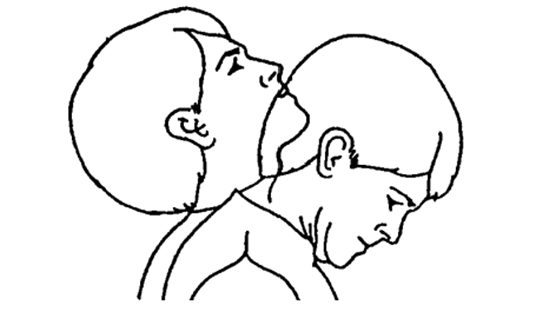
Sidebending
Bend your ear toward your right shoulder while looking straight ahead; hold, then alternate.
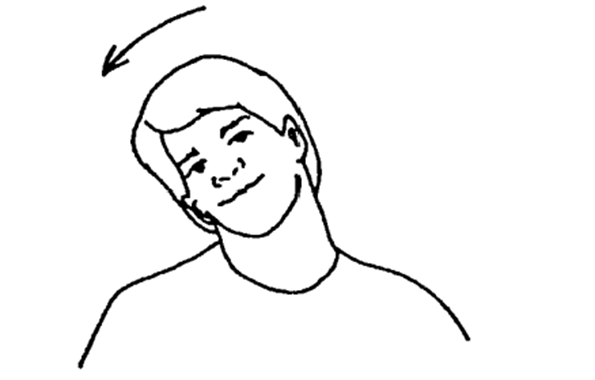
Rotation
Turn to look over your right shoulder; hold, then switch sides.
Add gentle hand pressure at the chin as tolerated for more stretch.
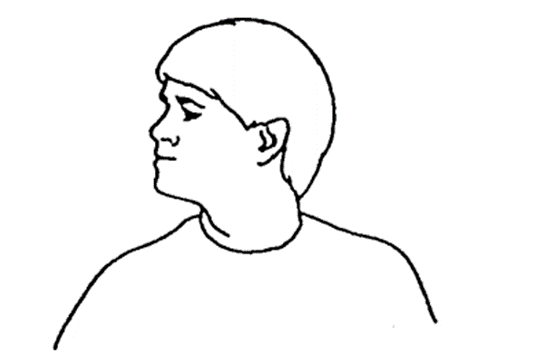
Scalene
Sit with your right hand holding edge of chair.
Place your left hand over your right collarbone to stabilize.
Pull chin back, tip ear toward left shoulder, turn to look over left shoulder and hold.
Repeat on right side.
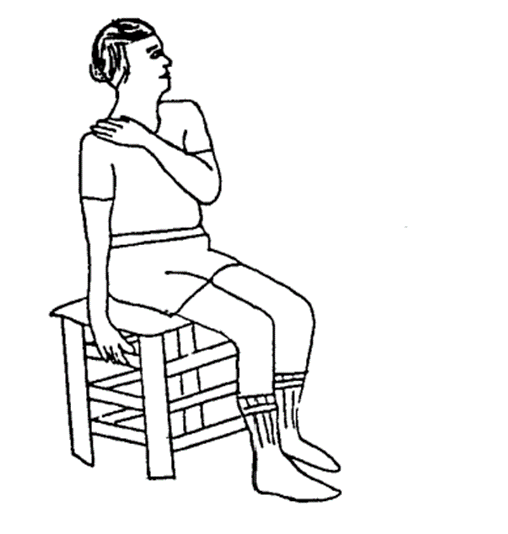
Upper Trapezius
Sit with right hand holding edge of chair.
Move chin towards chest, tilt your left ear toward your left shoulder turn right to look up toward the ceiling. Left hand can be used for overpressure – DON’T PULL.
Repeat to right side.
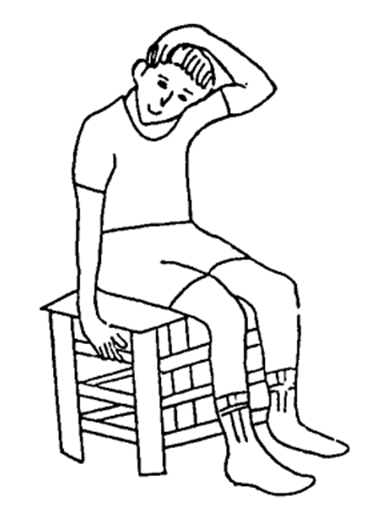
Levator Scapulae
Sit with right hand holding edge of chair.
Tip chin towards chest, tip ear toward your left shoulder and nose toward your left armpit.
Left hand can be used for gentle overpressure – DON’T PULL.
Alternate.
For a deeper stretch:
Lift right arm up and place hand behind neck. Avoid shrugging.
Tilt left ear toward left shoulder, turn head to left, and bend chin down.
Alternate.
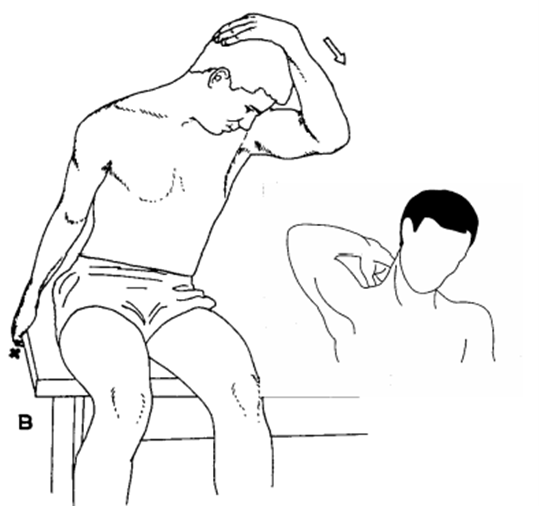
Daily cervical stabilization exercises
The most common muscles to become weak for those with neck dysfunction are the cervical flexors. The deep neck flexors are significant contributors to the stability of the cervical spine. These exercises will strengthen the deep flexors to improve posture and decrease strain on the spine, which can decrease neck pain and headaches.
Instructions:
- Hold 10 seconds & Repeat 10 times.
- Complete 1-2 times per day.
- This should be pain-free. Drop back at least one level and consult your therapist if this causes pain.
- Progress to the next exercise when you can complete a 10 second hold for 10 repetitions without fatigue.
- Once able to perform level 3 easily, decrease frequency to 1 time/week to maintain strength.
Level 1: Seated Head Nod
Sit upright with good posture.
Hold your neck with your hands or sit or stand against a wall with the back of your head against the wall for some support.
Gently nod head by bringing your chin toward your Adam’s apple. You should feel the back of your neck stretch and the front of your neck tighten.
DO NOT ALLOW THE LARGE MUSCLES IN THE FRONT OF YOUR NECK TO TIGHTEN (you can place your fingers on the front of your neck to make sure).
Focus on the small muscles around your throat. Hold 10 seconds, repeat 10 times.
ALTERNATE: Complete while sitting in your car with your head against the head rest.
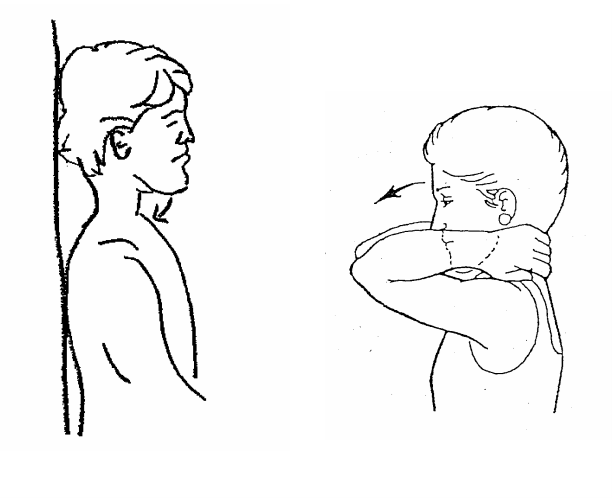
Level 2: Supine Head Nod
Lie on your back with your head on a firm surface and a towel roll under your neck.
Gently nod your head by bringing your chin towards your Adam’s apple.
Do not lift your head off of the table, and maintain contact with the towel roll.
Feel the back of your neck lengthen and the front of your neck tighten.

Level 3: Supine Head Lift
Lie on your back with your head on a firm surface and a towel roll supporting your neck.
Gently nod your chin toward your Adam’s apple and lift your head up slightly.
Do not lose contact with the towel roll.
Feel the back of your neck lengthen and the front of your neck tighten.
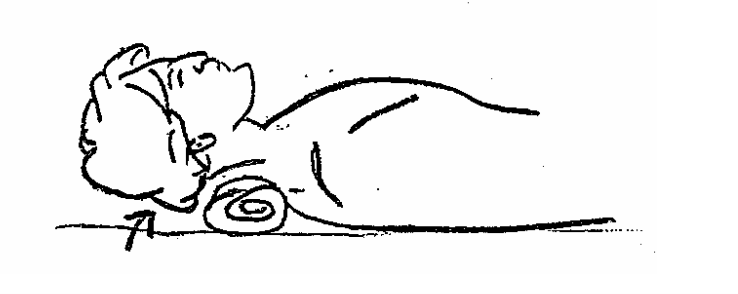
Cervical isometric exercises
To strengthen muscles in the neck and/or maintain strength gained.
Instructions:
- Do only the exercises instructed by your therapists.
- Hold each exercise for a total of 10 seconds. Ramp up the pressure into your hands for 2 seconds, push at maximum pressure for 6 seconds, then slowly release the pressure for the final 2 seconds.
- Repeat the sequence for a total of three to six repetitions, trying different joint angles if instructed to do so.
- Exercise 2-3 times per week, not 2 days in a row, performing instructions from your therapist.
- There should be no movement of your head while pushing; however, your therapist may instruct you on how to do each exercise in various positions throughout the range of motion.
Extension
Clasp both hands behind your head, use a towel sling, or furniture headrest.
Attempt to tip your head back to look up at the ceiling while resisting with your hands.

Sidebend
Place your right hand above your right ear.
Attempt to tip your right ear toward your right shoulder while resisting with your hands.
Repeat on the other side.
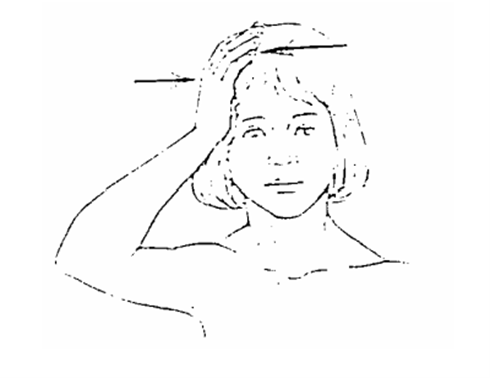
Rotation
Place the heel of your right hand against the side of your forehead.
Attempt to turn your head to the right while resisting with your hand.
Repeat on the other side.
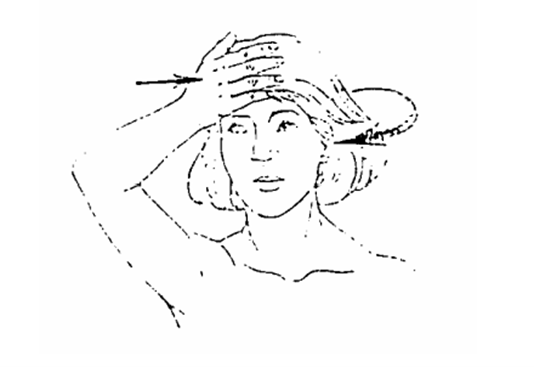
In addition to these cervical spine exercises, thoracic spine and postural stretches can be also helpful in managing neck pain. Please clic below.
